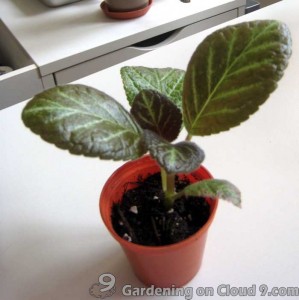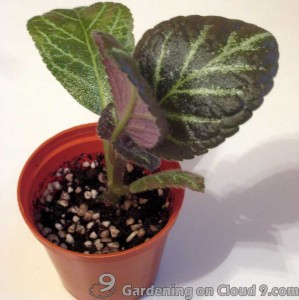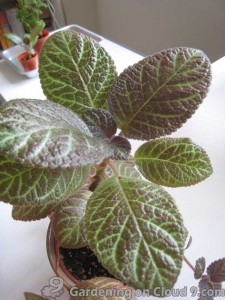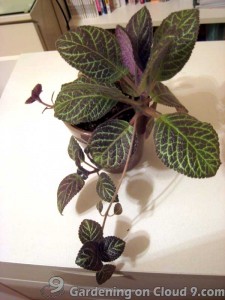Recently, I have noticed that my Episcia (aka Flame Violet) often folds up its top pair of leaves when the night comes. The leaves are near the horizontal during the day and close to the vertical at night. And while sometimes the pair of leaves moves just slightly, pointing to the ceiling, there are times the leaves fold up so tightly, sticking against each other with hardly any gap in between.
As ignorant as I may sound, at first, I suspected that this movement of the leaves of my Episcia was due to insufficient sunlight (it had been rainy and gloomy for over a week). So, to keep my Episcia “open” at night, I put my plant under artificial light for around 14 hours per day for several days. However, the artificial light didn’t help at all. The top pair of leaves closes at night regardless of the amount of light there is during the day.
My baby Flame Violet, which I have propagated a while ago, also has its own circadian rhythms.
Open during the day
Close at night
And last week, from my bonsai instructor, I have finally got a clue! Once I told him about my Episcia, he said, “There is nothing to worry about. Your plant, like you do, needs some sleep too.”
That makes sense. This is just how the world works – we work during the day and sleep at night (or reverse), and so do many other organisms.
And the more research I have done on this topic, the more I find it interesting. It appears that the daily opening and closing of the leaves may not simply be a response to the sun, but the circadian rhythms in plants. And what I have observed is the sleep movements of my Episcia.
Throughout history, many botanists had studied extensively on this phenomenon of plants. Charles Darwin published an entire book on the Movement of Plants, suggesting that the plant itself generates the daily rhythms. And by using this behavior of plants, Carolus Linnaeus invented the flower clock. While it is not easy to make a functioning flower clock, people have done it. Here is the Solar Clock built in Truman State University.
If you are interested in learning more about the sleep movements of plants, here is a good article written by a chronobiology specialist – Clock Classics: It all started with the plants.























